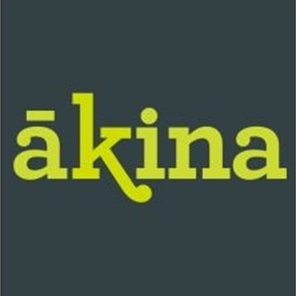A Rate Cut Here, Another Cut There, Lower Rates Are Nice And Clear
- More news on Trump’s trade tariff agenda. Last week, US metal imports were in focus and officials are strategizing implementing reciprocal tariffs.
- It’s a busy week south of the equator. The RBA meets tomorrow followed by the RBNZ on Wednesday. For the Aussies, rate relief may finally be on its way with consensus calling for a 25bps cut. Meanwhile the RBNZ is set to deliver a third 50bp cut in a row. It’s all but a done deal, so our focus will instead be on the new OCR track.
- Our COTW takes a look at the RBNZ’s latest survey of inflation expectations, which remain anchored at 2%. It’s a win in the inflation fight and certainly supports the RBNZ’s credibility.
Here’s our take on current events
Another week, another round of Trump tariffs. Last week, US President Donald Trump announced a 25% tariff on all steel and aluminium imports into the US. As the world’s largest importer of steel, the inflationary implications are worrisome. The intention may be to protect US manufacturers, but the practice will likely see US consumers paying more for products dependant on the metals. Reciprocal tariffs are also on the trade agenda. During his election campaign, Trump promised “an eye for an eye, a tariff for a tariff”. And now, officials are tasked to game plan. It seems that no one is safe – whether ally to the US or competitor. However, the policy would arguably have the greatest impact on emerging markets. Countries such as India and Thailand tend to have the highest tariffs in place to help foster and protect domestic production.
This week, our focus shifts to the central
banks of the Southern Hemisphere, with both the RBA and RBNZ
taking centre stage. First, we turn to our neighbours down
under, where market expectations are high for the RBA to
commence its rate-cutting cycle. Following Australia's
inflation slowdown in December to 2.4% (well within the
RBA's 2-3% target band) and significant cooling in core
inflation measures, markets are pricing in an 86%
probability of a 25bps rate cut tomorrow. While there’s a
compelling case for the RBA to deliver a rate cut, there’s
still an argument for holding steady, with ongoing strength
in the economy, particularly within the labour market. The
relative strength of Australia’s labour market contrasts
with our own
softening in labour demand, and helps
explain why many work-ready Kiwi are crossing the ditch.
Given the labour market strength in Australia, tomorrow’s
decision by the RBA is no done deal. And will certainly have
us and markets on the edge of our seats.
What is a done deal, is the RBNZ’s decision on Wednesday. As we’ve said, even well before their November meeting, we’re expecting another 50bps cut. And the RBNZ has lined it up beautifully. Governor Adrian Orr said as much. And that's as close to a done deal as you get. It was uncharacteristic to receive such a clear verbal signal. Nonetheless the signal was supported by several members of the Monetary Policy Committee. So 50bps it is.
But 50bps is not our focus. The focus instead will be on the projected OCR track, and all the forecast changes that go into it. There’s a good chance the OCR track is left unchanged… frustrating market traders, and us. And there’s an even better chance the OCR track is lowered a little more… reflecting the weakness in the data. A lower track would appease market traders and economists like us. Because the November track just doesn’t cut it (literally).
The RBNZ’s current trajectory is unlikely, in our view. Why cut to 3.5%, and then wait (an eternity in markets) to cut to 3% two years later? We argue the case not to muck around. Cut to 3%, a neutral setting, and be on the watch to move into stimulatory territory if the trade wars bite us. Get to neutral and get the economy moving. Cut to 3% and hopefully wait it out for a full recovery. Ultimately, it’s better to act swiftly and decisively (not wait for two years) to be in a position to hike again in two years time. A rate hike would come when the economy has fully recovered... and you want to make sure it doesn’t reheat too much (again). We can’t wait to call for hikes. We’d love to see the economy in that position. But sadly, it’s not. Not even close. More meaningful cuts are required here and now.
The Chart of the Week: is anchored and secured.
The latest RBNZ survey of inflation expectations showed expectations remain well-anchored at the RBNZ’S 2% sweet spot. All measures, bar the one-year-ahead measure, edged closer towards 2%. It’s great news and an incredibly important development. Expectations are key in price setting behaviour and therefore the inflation outlook. The higher our inflation expectations are, the higher we’ll push up prices, including wages. As history shows, expectations of inflation follow actual inflation and can be self-reinforcing.
So, the drop across expected measures were exactly what we and the RBNZ want to see. The all-important two-year ahead measure dropped 6bps to 2.06%. While further out, inflation expectations for the 5-year-ahead measure fell 11bps to 2.13%. Similarly, the 10-year ahead measure dropped 12bps to 2.07%.
Recent downward pressure on the NZD, along with higher petrol prices and ‘Trumpflation’ worries were likely behind the 10bps increase in the one-year ahead measure to 2.15%. Still, all measures remain well within the RBNZ’S comfort zone and confirms the stabilisation in inflation.

| Special Topic: Summer of cautious indulgence. |
Like every year, consumer spend ramped up into the summer holidays. According to Kiwibank electronic card data, the average volume of transactions across the months of December and January was 2.3% more than the 2024 average. But the summer spike was far more muted compared to previous years. Compared to last (2023/24) summer, the total volume of spend contracted 1%.
Beneath the headline, spend patterns were mixed. The summer period was good for hospitality, while entertainment spend was flat and recreational spend underperformed. Demand for retail goods remains weak, at least in aggregate. Though some bright spots are emerging. Housing-related spend strengthened as summer chores took over.
Household balance sheets have come under significant pressure over the last few years. Financial conditions have been tight, with high consumer prices and expensive credit. Household disposable incomes have been squeezed. And as households have cut back on spending, it’s been discretionary items culled first.
2025 holds a different future. The outlook for spending this year is slowly improving. First, it’s about bringing balance sheets back to baseline. The change in interest rates and expected rise in house prices should improve the financial position of many households. Second, the cost-of-living crisis is coming to an end as we slowly enter a period of real income growth.



 RotoruaNZ: RotoruaNZ And Air China Form Partnership To Strengthen Tourism
RotoruaNZ: RotoruaNZ And Air China Form Partnership To Strengthen Tourism Westpac: Shifting To A Sustainable Marine Economy Could Contribute $14bn By 2035
Westpac: Shifting To A Sustainable Marine Economy Could Contribute $14bn By 2035 Mindful Money: KiwiSaver Investments Fuelling The Climate Crisis - New Research Reveals A Surge In Fossil Fuel Investments
Mindful Money: KiwiSaver Investments Fuelling The Climate Crisis - New Research Reveals A Surge In Fossil Fuel Investments Stats NZ: Visitor Arrivals Up In 2024
Stats NZ: Visitor Arrivals Up In 2024 Hospitality NZ: Hospitality NZ Welcomes Government’s Australian Tourism Campaign
Hospitality NZ: Hospitality NZ Welcomes Government’s Australian Tourism Campaign Bill Bennett: Download Weekly - Faster Fibre And NZ's First Private 5G Network
Bill Bennett: Download Weekly - Faster Fibre And NZ's First Private 5G Network



